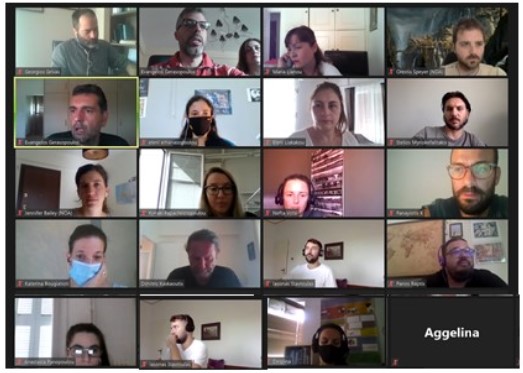
The first meeting of APCG for the new academic year took place today with the participation of all its members. It has been a while since the last time, so it was a nice opportunity to catch up and discuss the new challenges ahead.

The first meeting of APCG for the new academic year took place today with the participation of all its members. It has been a while since the last time, so it was a nice opportunity to catch up and discuss the new challenges ahead.
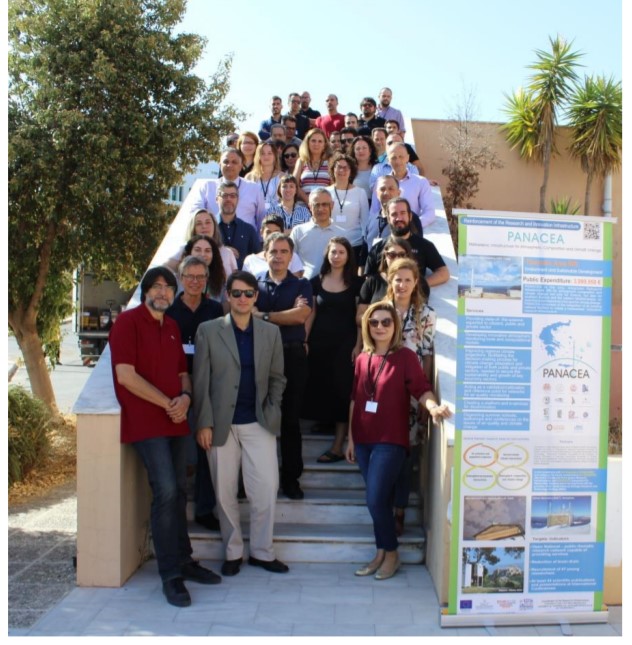
Young researchers and students from almost all atmospheric groups in Greece, as well as key-note speakers from Greece and abroad deliver a number of very interesting presentations.
Read more: The second scientific Conference of PANACEA started today!

Great Greek Success!!! The Greek GEO Office, which is operated by our group, initiated in cooperation with UNESCO, a global activity within GEO titled “Earth Observations for Climate Change Impacts on World Heritage Cities”. The Community Activity was approved last week from the GEO Programme Board and has been officially included in its Working Programme, incorporating several urban cultural heritage aspects. In this initiative, more than 80 partners have already joined, originating from 24 countries and 10 international organisations. Read our article for more details.
Read more: Earth Observations for Climate Change Impacts on World Heritage Cities
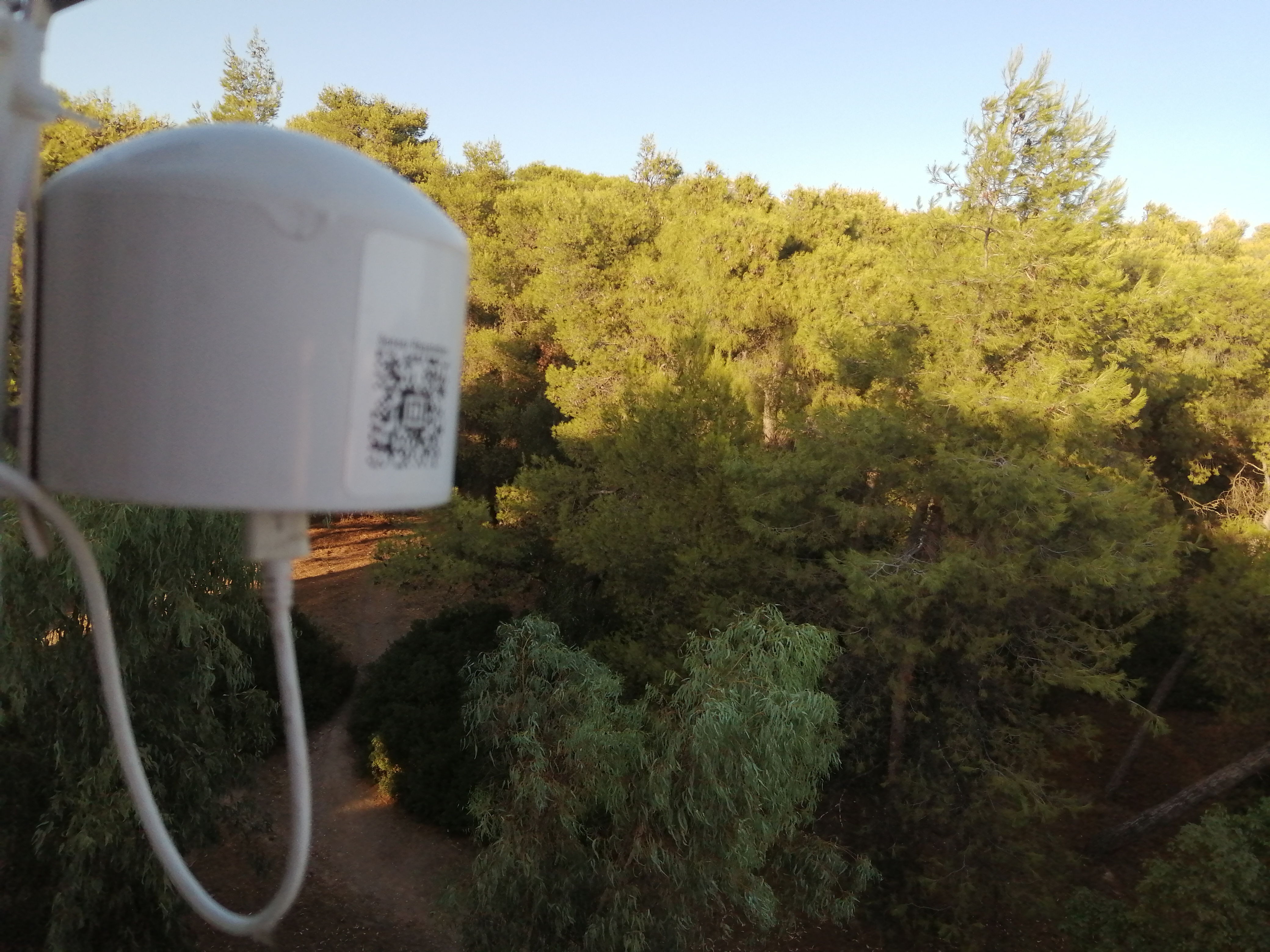
The new research of our group demonstrates the network of low-cost, compact, particulate matter (PM) sensors which operates in Athens, the largest city in Greece, for five months now, and how it performs with respect to measurement accuracy and other external factors.
Read more: Low-cost, smart sensors to monitor air quality - what about data quality?
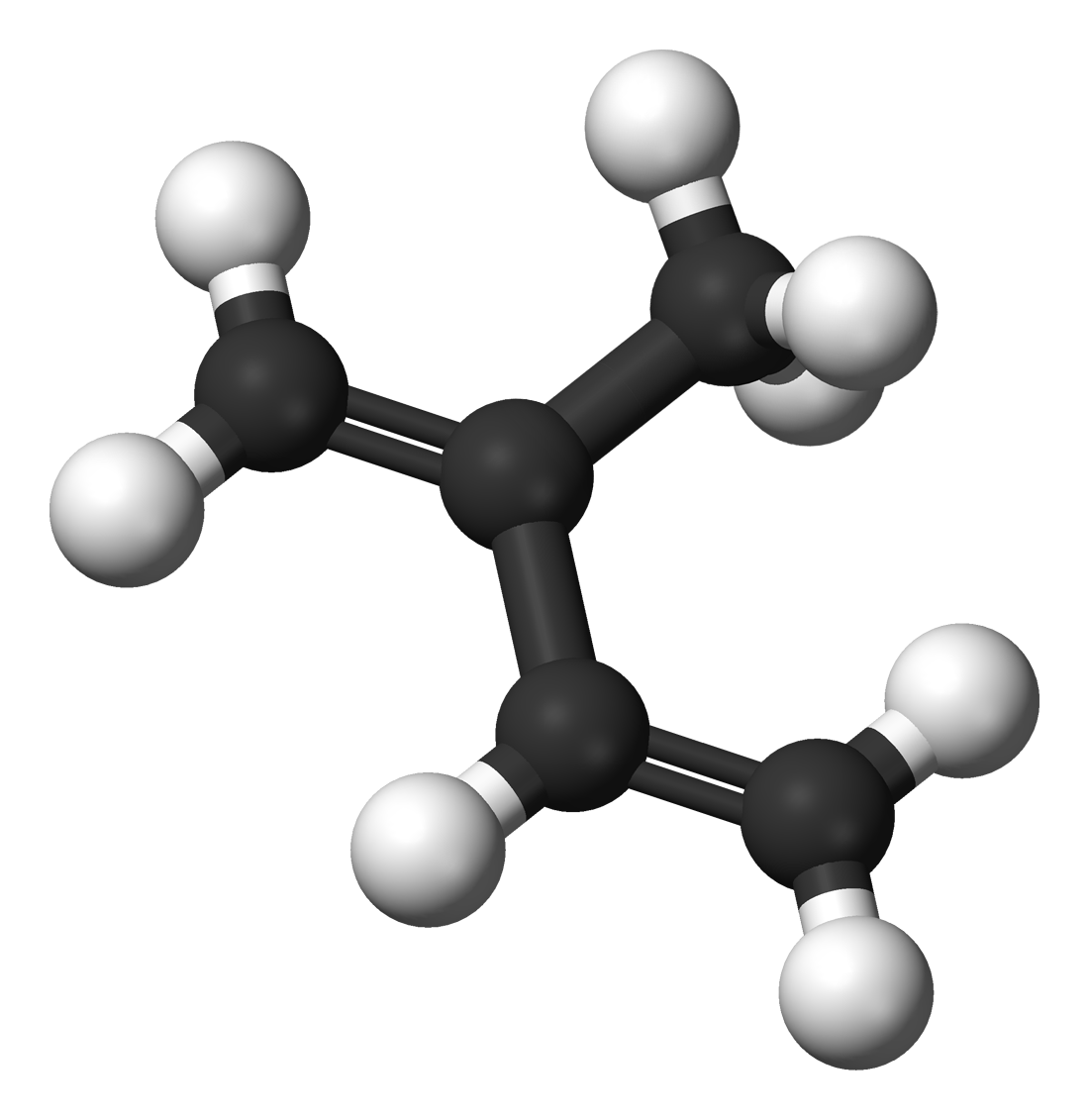
Monoterpenes and isoprene are biogenic volatile organic compounds (BVOCs) contributing significantly to the formation of secondary organic aerosol (SOA) and tropospheric ozone (O3). Despite they are considered of biogenic origin, other emission sources might contribute to their levels in urban environments. Does it also stand for Athens? Read our article for more details.
APCG digs into the impacts of chemical weathering on Cultural Heritage (CH). Twenty-one archaeological sites in Greece were selected to study their exposure to particulate pollution, in terms of aerosol loading and chemical type, to infer on the potential impact on the structural materials (specifically stone) of the monuments, using Space-Borne Remote Sensing instruments, MODIS and CALIPSO.
Read more: Spatial variability of aerosols over Greek archaeological sites
In our new article the novel 3D-PSCF model was applied in Athens for the first time, providing new information regarding the vertical zones in which transport of pollutants occurs.
Read more: Assessing the contribution of regional sources to urban air pollution in Athens
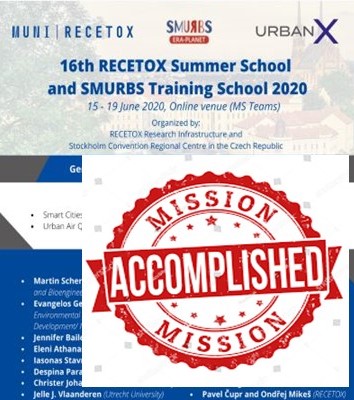
The 16th Recetox Summer School and SMURBS Training School 2020, that took place during the 15-19 June 2020, ended with great success!
Read more: APCG shines in the 16th Recetox Summer School and SMURBS Training School!
An interesting article from member of APCG Dr. Kosmopoulos, about the photovoltaic (PV) energy production from the rooftop solar plant of the National Institute of Technology Karnataka (NITK) and the impact of clouds and aerosols on the PV energy production.
Read more: Earth Observation for Smart Cities' Energy Production and Solar Power Management
APCG research mentioned in greek newspaper article examining the decline in greenhouse gas emissions in association with climate change due to lockdown.
Read more: Τemporary breath of life in big cities due to lockdown
A recent research from the Institute for Environmental Research and Sustainable Development demonstrates how climate will be affecting our lives in the future.
Read more: Earlier and longer "tropical days and nights" in Greece due to Climate Change
The Head of APCG Dr Evangelos Gerasopoulos, talked about how the Covid19 pandemic sets the need for a new Sustainable Development model.
Read more: The Covid19 pandemic sets the need for a new Sustainable Development model
 APCG studies NO2 levels above Greece prior and during the Covid19 pandemic, retrieving Sentinel5P data. Interesting findings, consistent to previous reports, are published in Κόsμος.
APCG studies NO2 levels above Greece prior and during the Covid19 pandemic, retrieving Sentinel5P data. Interesting findings, consistent to previous reports, are published in Κόsμος.
Read more: APCG outreach -on Covid-related air pollution- through Κόsμος magazine
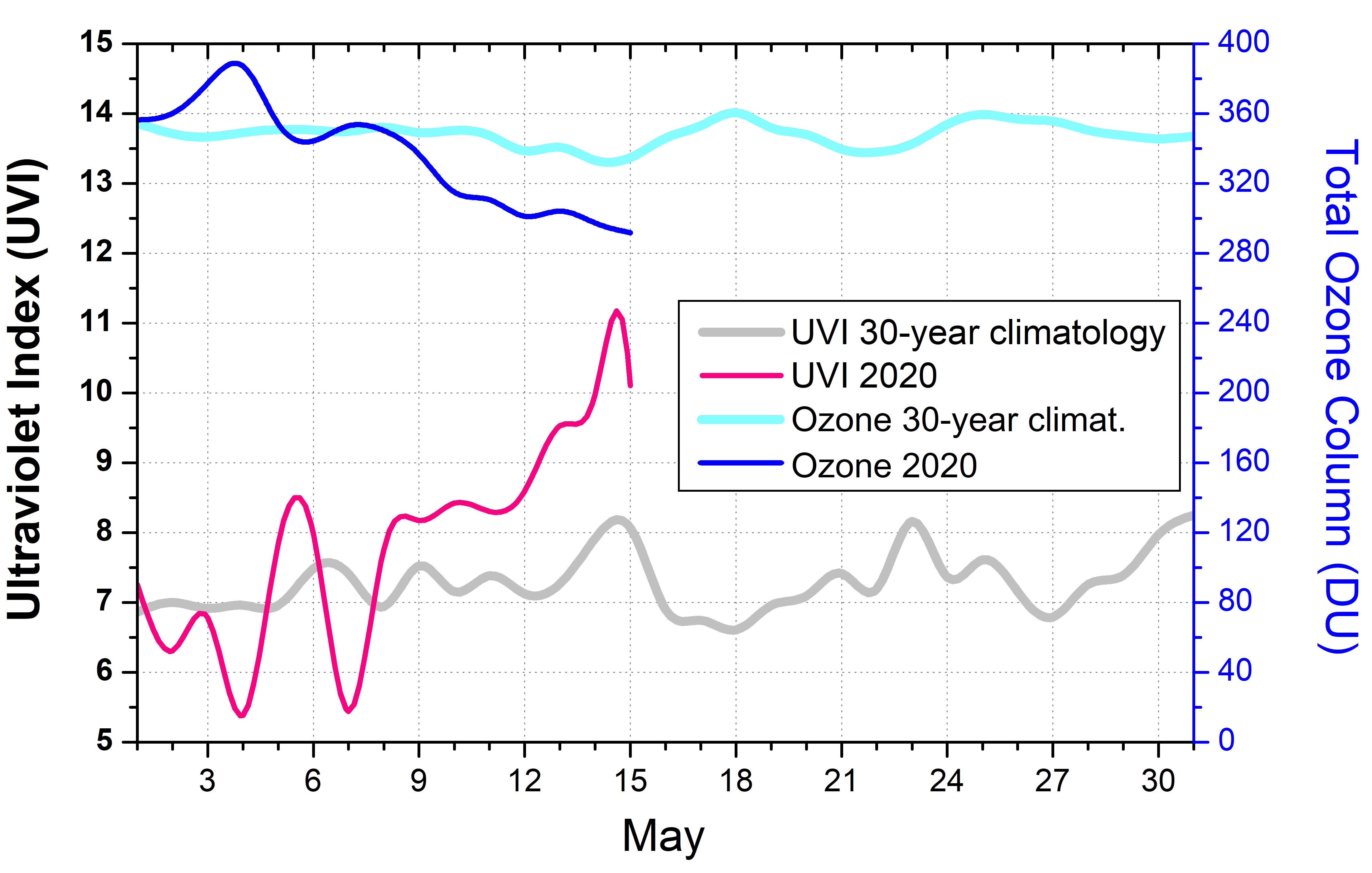
Members of the APCG group in collaboration with PMOD/WRC (Switzerland) observed during the last days relatively low...
Read more: Greece experiences very high UVI values from 16-18 May
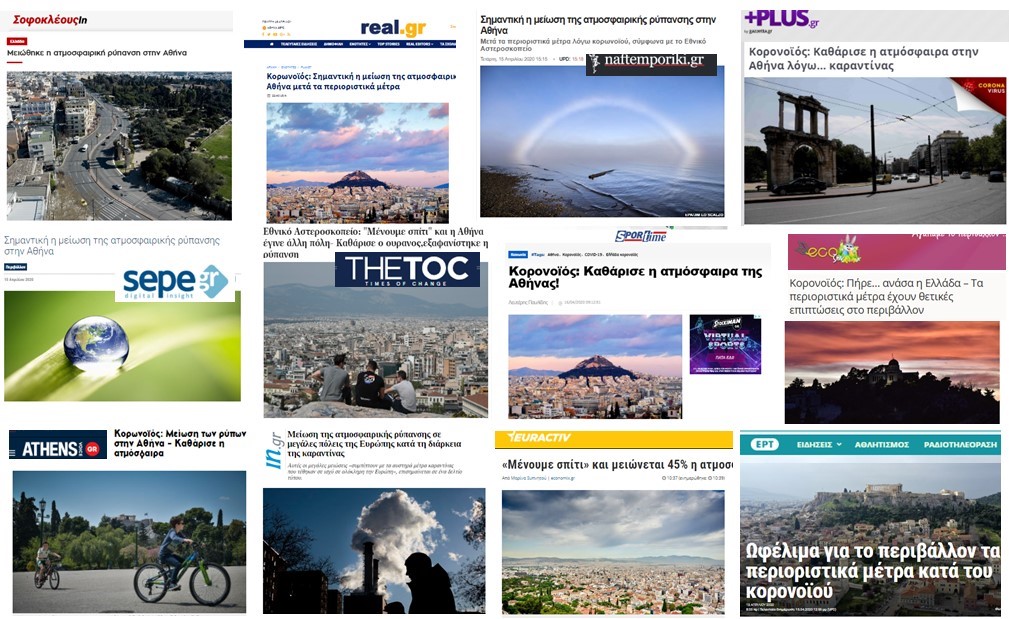
Our 1st press release on air pollution levels in Athens during the COVID-19 pandemic gained the attraction of several ...
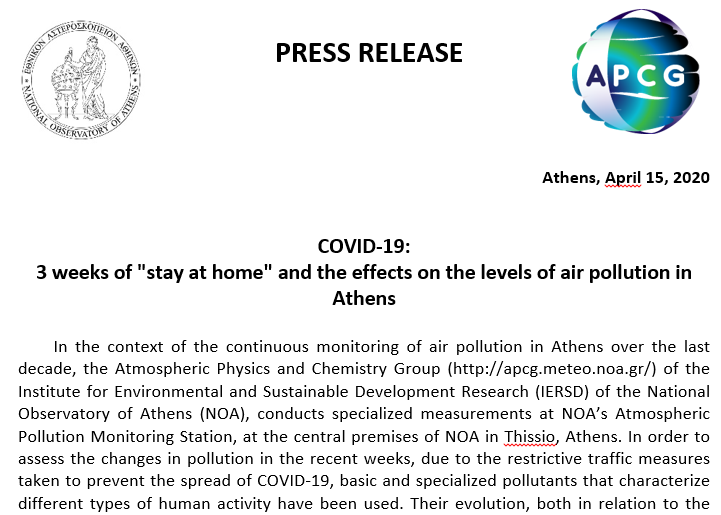
COVID-19: 3 weeks of "stay at home" and the effects on the levels of air pollution in Athens (APCG press release, 14 April, 2020)
Read more: Our press release on air pollution levels in Athens during the COVID-19 pandemic
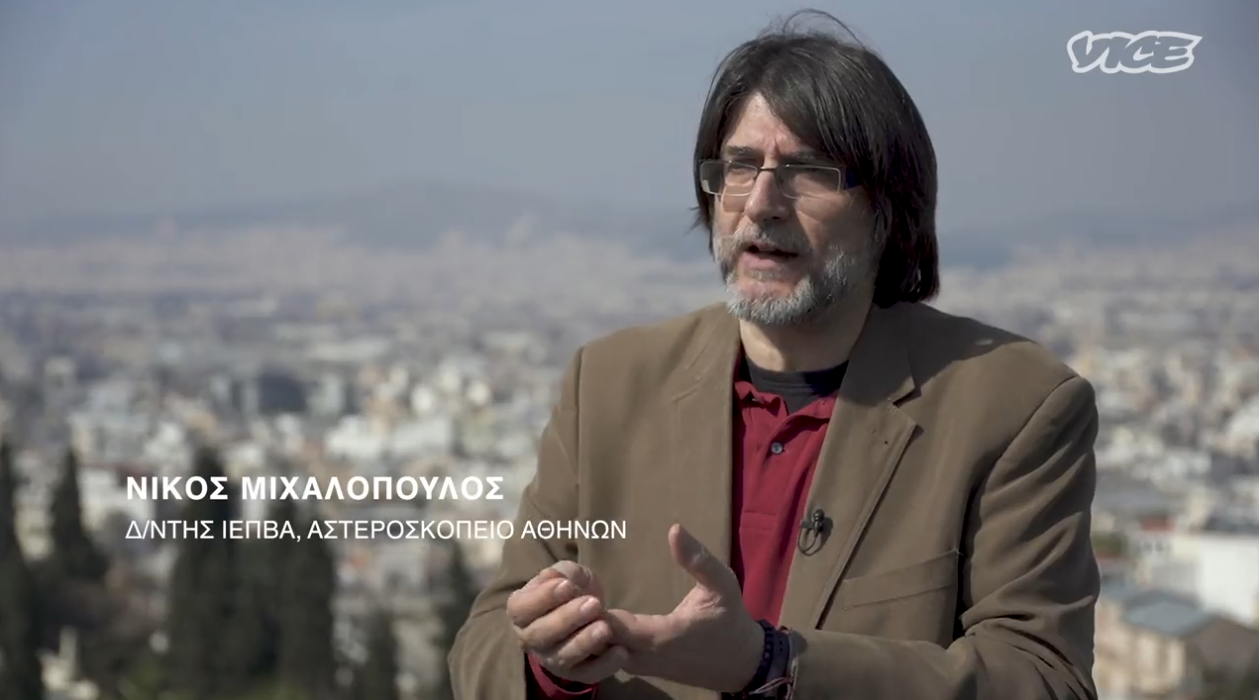
An interesting video on climate change and its effects on the environment and health has been created by VICE e-mag.
Read more: Our Institute's contribution on climate change research, now at VICE Video
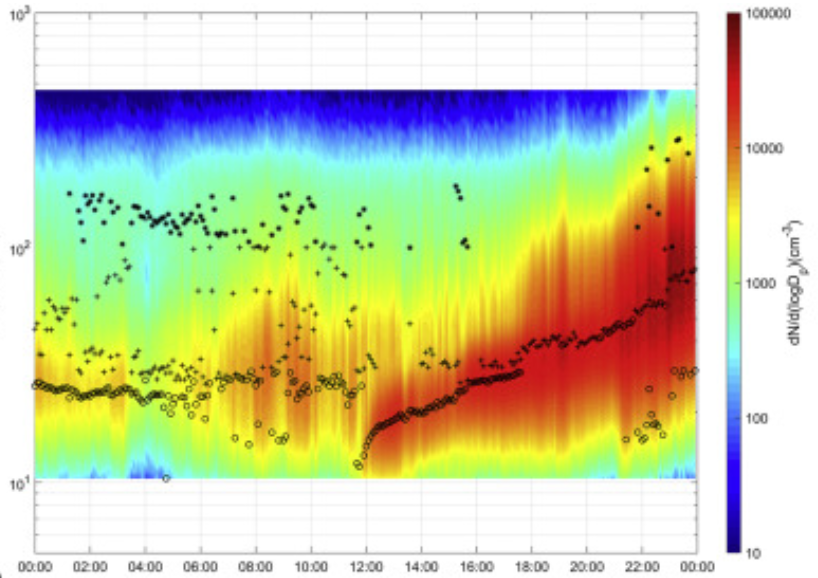
Members from the APCG group served as authors for a newly published article in Atmospheric research. This is the first time, to our knowledge, that long-term size distribution measurements are analyzed for new particle formation events, in a comparative way, between an urban and a regional background site in this region.

DRAXIS, our partner in EMISSION project, organizes the upcoming Copernicus Thessaloniki Hackathon!
Read more: APCG is invited to participate in the upcoming Copernicus Thessaloniki Hackathon!
APCG members will participate in the 2019 Fall Meeting, AGU, San Francisco, CA, 9-13 Dec., with the following presentations:
1) E. Gerasopoulos, E. Athanasopoulou, M. Ramacher, O. Speyer, M. Karl, I. Stavroulas, G. Grivas, J. Bailey, A. Kakouri, City scale air pollution modelling and high resolution exposure mapping of an urban hotspot in the Eastern Mediterranean.
2) Bailey J., Speyer O., Athanasopoulou E. and Gerasopoulos E., Insights and Policy Implications from a Harmonized Earth Observation Approach to Urban Air Quality.
3) Kosmopoulos, P.G., Kazadzis, S., Kontoes, C., Blanc, P., El-Askary, H., El-Khayat, M.M., and Zografos, D., Addressing SDG7 through the nextSENSE showcase.
4) Raptis Ioannis-Panagiotis, Kazadzis Stelios, Gaia Pinardi, Evaluation of TROPOMI NO2 Retrievals Using PANDORA Measurements in Athens.
APCG participates in the Energy Working Group of EuroGEO, soon to participate in the GEO Ministerial Summit in Canberra, Australia.
Read more: On our way to the GEO Ministerial Summit in Canberra, Australia
The current, highlighted research and project activity of APCG to combat climate change implications, is now hosted at the ECOTEC magazine. ...
Read more: Smart-city solutions for climate change-related phenomena
APCG participates in the campaign #17days17goalsgr, in the frame of Researchers night 2019. ...
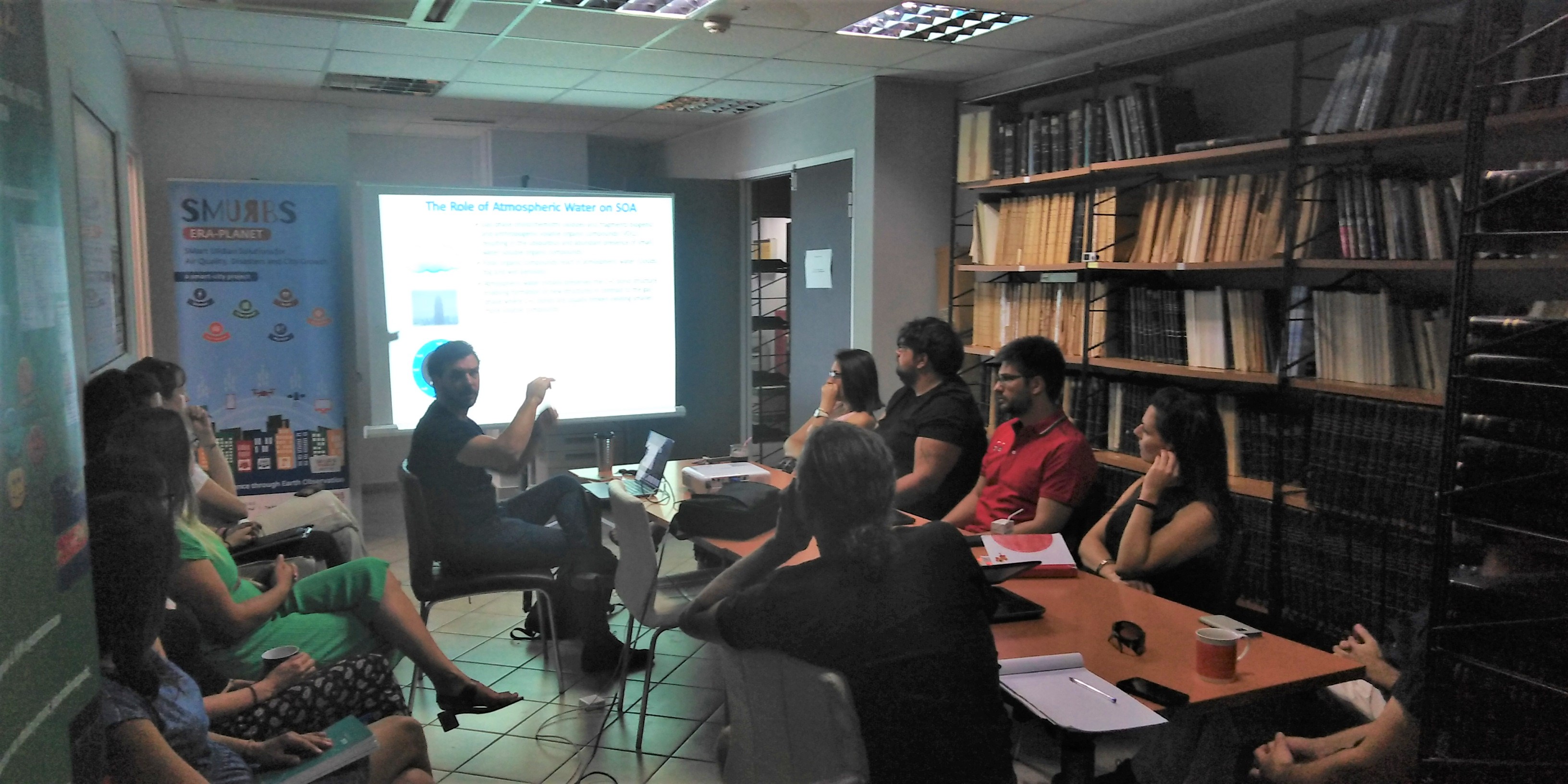
APCG meets on a monthly basis, to discuss on state-of-the-art research issues of interest to its members. Today, another fruitful meeting was held at IERSD premises, where Dr. Stelios Myriokefalitakis introduced the importance of multiphase processes on the formation of secondary organic aerosol (SOA) in the atmosphere and on atmospheric nutrient cycles. Also, his modeling results on the impacts of bioaerosols on the global scale set the basis for a long discussion on the health aspects of atmospheric pollution, as well as on the bridging spatial model scales.
APCG members have participated in the European Aerosol Conference – EAC 2019, 25-30 August 2019, Gothenburg, Sweden, with the following presentations:
1) Iasonas Stavroulas, Eleni Liakakou, Georgios Grivas, Nikolaos Mihalopoulos and Evangelos Gerasopoulos, Characterization of atmospheric pollution at the major Greek port city of Piraeus.
2) Despina Paraskevopoulou, Aikaterini Bougiatioti, Iasonas Stavroulas, Maria Tsagkaraki, Athanasios Nenes and Nikolaos Mihalopoulos, Wintertime oxidative potential and optical properties of brown carbon in atmospheric aerosol.
3) Aikaterini Bougiatioti, Iasonas Stavroulas, Despina Paraskevopoulou, Georgios Grivas, Eleni Liakakou, Evangelos Gerasopoulos and Nikolaos Mihalopoulos, Fat Thursday (Tsiknopempti) as an important source of Organic Aerosol in the urban environment of Athens.
(image source: Greek Fire Service) APCG members are working on the online monitoring of the major active fire event in Evia. The fire plume has affected...
Read more: APCG members are working on the online monitoring of the major active fire event in Evia

Two APCG members served as authors for a recently published article in the Journal of Environmental Science and Health, Part A, which shows the potential health and equity co-benefits related to policies reducing particulate matter (PM) pollution from residential wood burning in Athens, Greece.
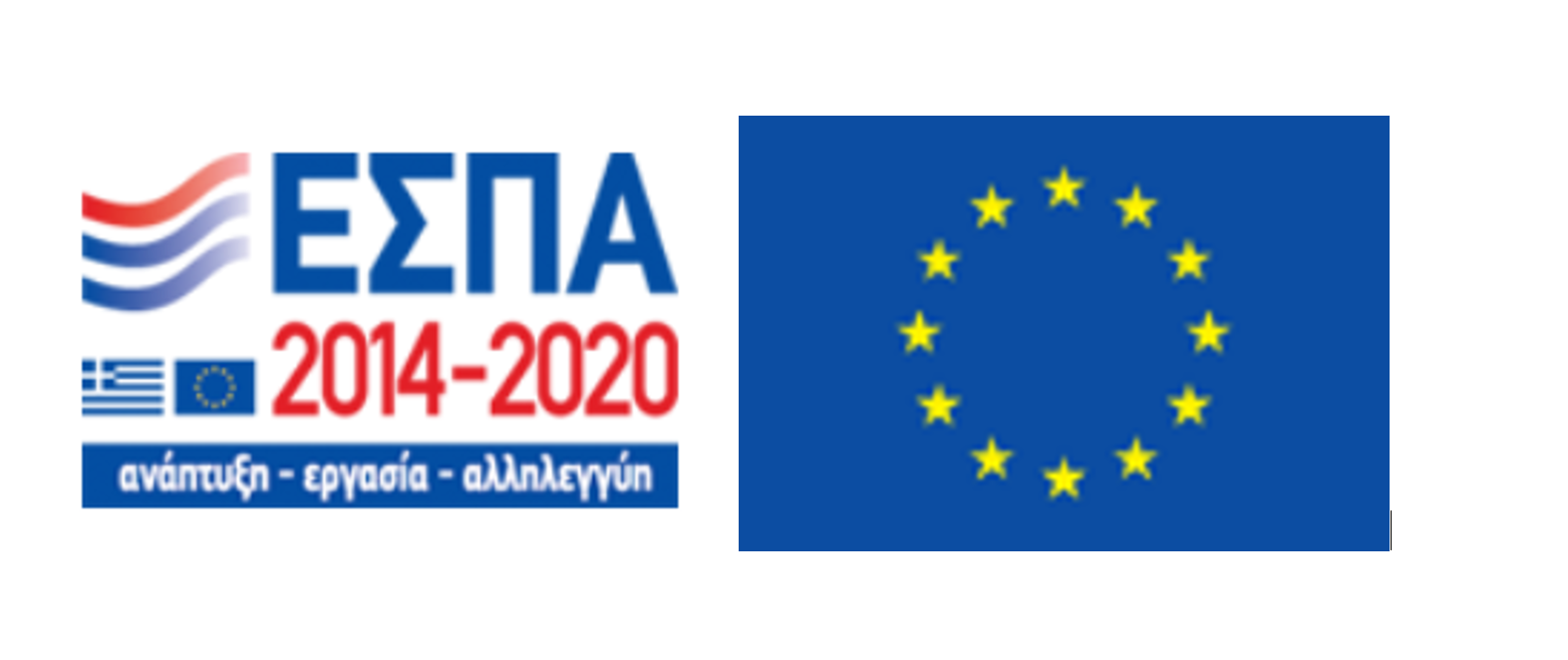
Members of the APCG research team have won and participate in the newly funded program ‘Support of new researchers – B cycle’ of the Ministry of Finance and Development. State-of-the-art research will be performed, dedicated to the study of atmospheric chemistry over the urban center of Athens using in situ, remote sensing and modeling EO platforms.
Δέκα μέλη του ερευνητικού δυναμικού της ομάδας APCG επιβραβεύθηκαν και θα συμμετέχουν σε 3 ερευνητικά προγράμματα που θα χρηματοδοτηθούν στο πλαίσιο της Πράξης: «Υποστήριξη ερευνητών με έμφαση στους νέους ερευνητές – κύκλος Β’» (δημοσίευση εδώ). Θα πραγματοποιηθεί εκτενής έρευνα στο ευρύ αντικείμενο αιχμής της ατμοσφαιρικής χημείας στην περιοχή του λεκανοπεδίου της Αττικής, χρησιμοποιώντας εξειδικευμένες μετρήσεις τόσο από επιτόπιες παρατηρήσεις, όσο και με τις μεθόδους τηλεπισκόπησης και αριθμητικών προσομοιώσεων.
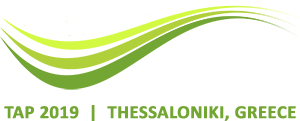
APCG members have participated in the 23rd 23rd International Transport and Air Pollution (TAP) Conference
2020-2030: Transport in critical transition, with the following presentation:
Papadakis, D. Stouraitis, A. Bartzas, E. Gerasopoulos, G. Grivas, E. Athanasopoulou, I. Stavroulas, P. Syropoulou, A. Agrafiotis, I. Christakis, T. Migos, I. Stavrakas and K. Ioannidis, EMISSION: Environmental monitoring integrated system using an IoT network
Smurbs 1st thematic video is out! SMURBS project sets the stage for integration of the still fragmented Earth Observation, into information and decision making tools for individuals and local governments, in a network of smart cities. SMURBS’coordination group and theme leaders explain and present their approachto enhance environmental and societal resilience to urban pollution, natural and manmade disasters as well as uncontrolled city growth, from each theme point of view, respectively.The overall goals of the project as well as first achievements in terms of networking and collection of user needs is also included. You may watch our video and find out everything about SMURBS project!
Click here to see ![]() video.
video.

SMURBS project is now hosted on the SciTech Europa Quarterly Magazine, June’s edition!
You may navigate through its interesting articles by clicking here, or you may select SMURBS' tribute, pages 108-109 here.
To access the full version of the article, please visit: www.scitecheuropa.eu/profile-smurbs-project/87128/
Article originally published on: www.scitecheuropa.eu/profile-smurbs-project/87128/
Reproduced by kind permission of Pan European Networks Ltd, www.scitecheuropa.eu/
© Pan European Networks 2018

An analytic report on HuffPost Greece, describing the current air pollution stresses in Greece and their impacts on public health and the cultural heritage of the country.
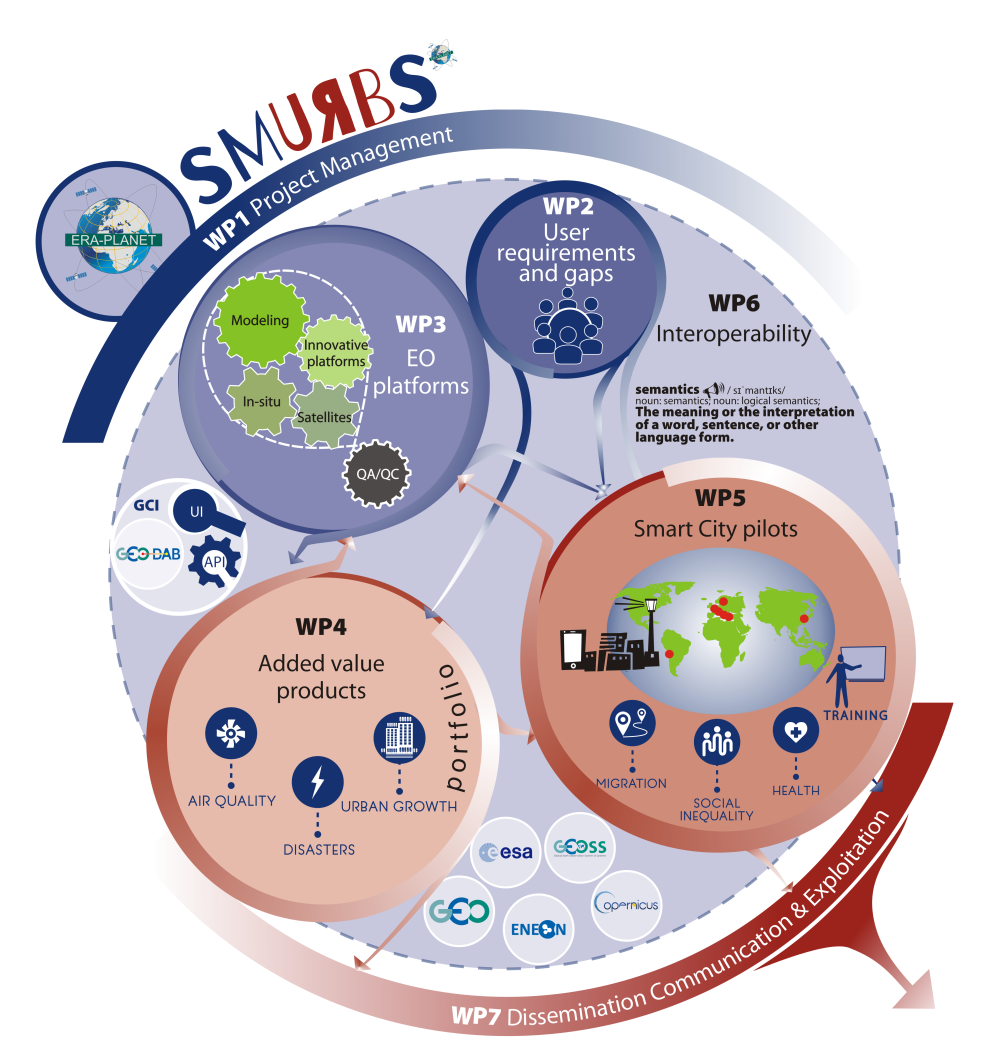
According to UNs “World Urbanization Prospects: 2014 Revision” in today’s increasingly global and interconnected world, over half of the world’s population lives in urban areas, while the coming decades will bring further profound changes to the size and spatial distribution of the global population, also due to increasing migration processes. The continuing urbanization is projected to add 2.5 billion of urban population by 2050, and the world population living in cities to increase to 66%. Under these circumstances, sustainable development challenges will increasingly concentrate in cities.
Read more: SMURBS/ERA-PLANET: The new Horizon2020 project coordinated by NOA